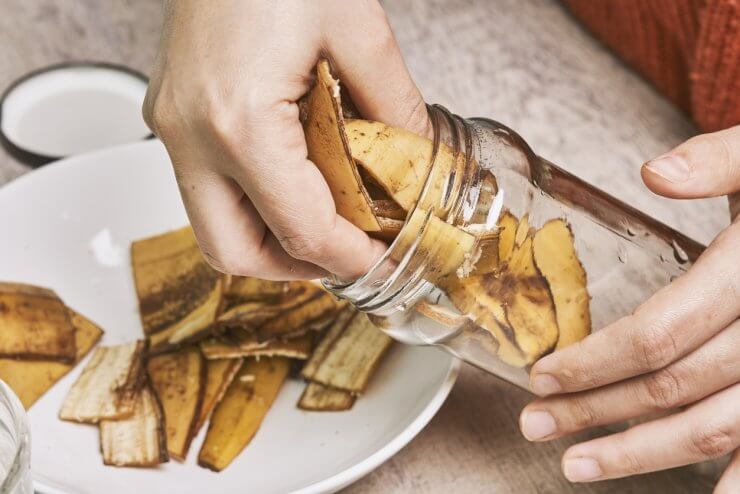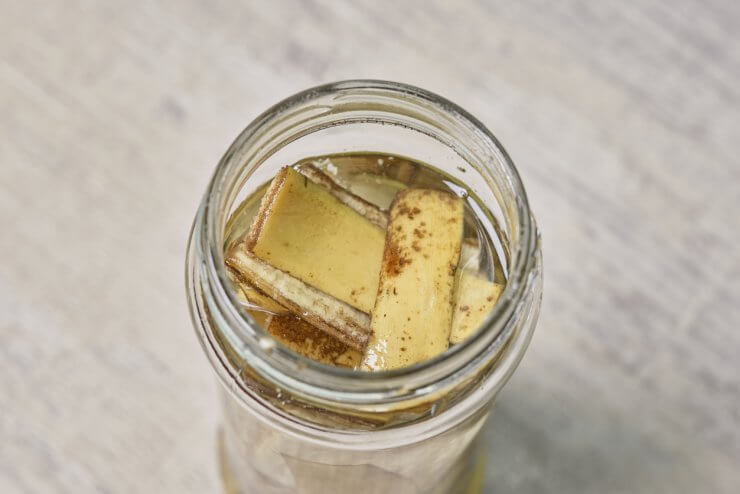
I know what you’re thinking, but banana peel tea isn’t some new trendy thing that you’ll find in a cafe alongside classics like Assam or Earl Grey. Although there are some folks who swear that it’s a great drink to induce a restful night of sleep, I’m happy with my chamomile.
This isn’t about me, though. My garden and I have very different nutritional needs, and there are a lot of claims that banana peel tea is the ultimate multi-vitamin for your plants. In theory, this makes sense, given the nutrients in bananas. But is it all that it seems? Let’s peel through the hype and find out.
Discover 7 top tips for growing, harvesting, and enjoying tomatoes from your home garden—when you access the FREE guide The Best Way to Grow Tomatoes, right now!

Banana peel tea: What it is, what it isn’t, and how to make it
There are some drastically differing opinions on banana peel tea out there. On some websites, it sounds like the magic potion that will make all your gardening and houseplant dreams come true. Then there are some humorous posts, like Please Don’t Make Banana Peel Compost Tea Fertilizer for Houseplants by blogger Jen Panaro, imploring you to forget you ever heard of the stuff.
I haven’t used this concoction on any indoor plants, but Jen’s summation that it’s basically a concentrated rotten banana that attracts fruit flies and fungus gnats is quite comical.
Let’s back up a step, though. Banana peel tea as a fertilizer is a pretty simple product. It’s just banana peels and water, like this:
- Fill a one-quart jar with chopped banana peels and cover them with water.
- Seal the jar and leave it for about a week, occasionally checking to ensure the peels are still covered with water.
- Strain the concoction, making sure to save all those banana peels for your compost pile.
- Dilute the banana peel tea with water in a 1:5 ratio.
- Use it to water your outdoor vegetable plants.
Why go through the trouble? We know that the more broken down nutrients are, the more easily accessible they are to our plants. That’s why your all-purpose liquid fertilizer tends to give you fast-acting results. That’s also why you don’t want to overdo it with liquid fertilizer, as too much will burn your plants.
In that sense, it seems like banana peel tea could give your plants a boost. But…
Look, if you’re a fan of banana peel tea, don’t take this the wrong way. I have nothing against it. Truthfully, though, I’m more inclined to make compost tea or enrich my garden with ready-to-use compost before I plant seeds.
Banana peels absolutely hold a revered spot in my compost, along with garlic and onion peels, the stems of winter squashes, and paper egg cartons.
Have you used banana peel tea as a fertilizer? What was your experience like?
Discover 7 top tips for growing, harvesting, and enjoying tomatoes from your home garden—when you access the FREE guide The Best Way to Grow Tomatoes, right now!





I learned somewhere that banana peels were good for black spot on roses. For about 15 years now, I dry the banana peels, then grind them in my garden blender with egg shells, tea leaves, coffee grounds. etc. I still have some black spot on certain roses but considering the number of beautiful roses that bloom in my organic garden, I am very pleased,
I bury my banana peels in the soil. Earthworms go absolutely crazy over them! That’s how I keep my little buddies growing and populating.
I use banana tea to water my peace lilies every now and then and it seems to help bring out new flowers
Every 3-5 weeks, or once a month. Add 1Tablespoon of Epsom Salt per gallon for flowering plants, tomatoes and peppers.
How often do you water the plants with it?